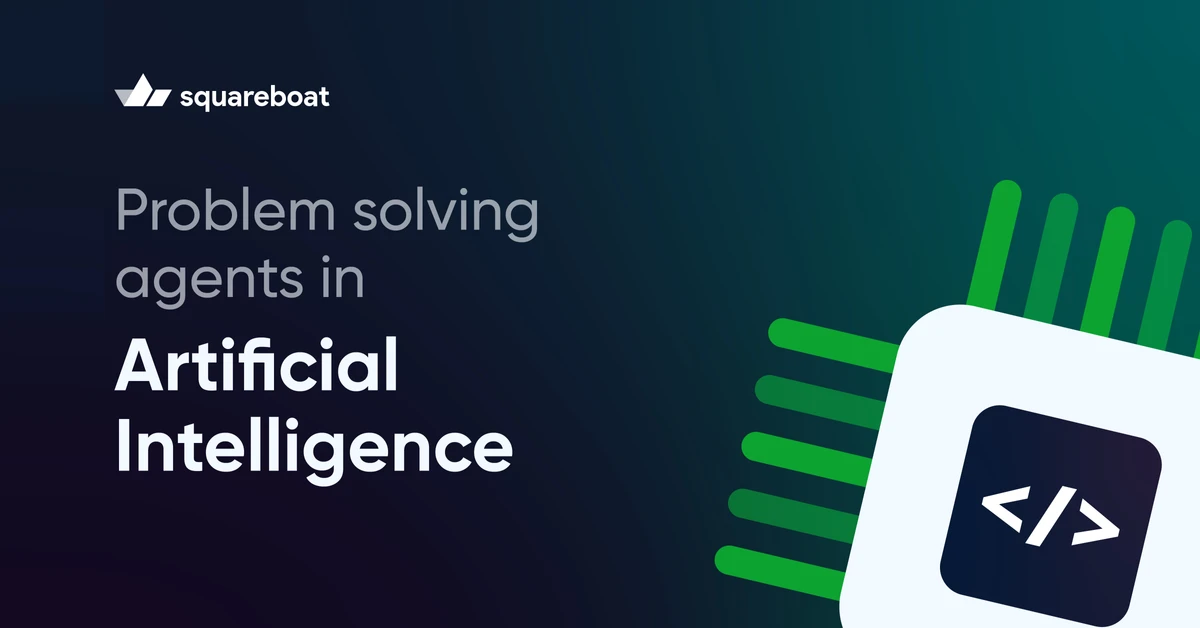Problem-solving agents in Artificial Intelligence are changing how machines handle complex challenges. These agents do tasks that need reasoning, planning, and decision-making. They use algorithms to find optimal solutions. From guiding robots to playing strategic games, they break big problems into smaller, doable steps. Knowing how these agents work is key to using their power in real-life situations. Let's take a closer look at the exciting world of problem-solving agents in Artificial Intelligence.
What is a Problem-Solving Agent?
A Problem-Solving Agent in Artificial Intelligence is a program designed to find solutions to specific problems by exploring different states and possible actions. It uses smart strategies (like search algorithms and decision-making rules) to figure out the best way to reach a goal. The agent starts from an initial situation, considers possible moves, and chooses the most promising path to solve the problem efficiently. It’s good at thinking strategically and adapting to new challenges, making it useful in complex scenarios.
Types of Problems in AI
- Ignorable Problems: These problems happen when deviations from the optimal behavior don't affect how well the system works overall. We can ignore these problems because they don't change much.
Example: Minor sensor inaccuracies in a robotic vacuum that do not hinder navigation can be ignored. The agent can continue functioning without addressing these issues, as they do not compromise the primary objective. - Recoverable Problems: These issues mess with how the system works, but it can fix them on its own. The system needs to correct itself right away to keep working.
Example: A Drone encountering wind disturbances while maintaining altitude. The system recalibrates its position using sensor data and feedback loops to get stable again. Irrecoverable Problems: These problems cause critical failures that stop system operations. They happen when damage or loss of essential parts makes it impossible to recover.
Example: A Hard drive crash during data processing in a server, which results in permanent data loss. Such problems necessitate contingency planning and fail-safe mechanisms to mitigate long-term consequences.
Steps in Problem Solving in Artificial Intelligence (AI)
- Problem Definition: Outline the Artificial Intelligence agent's job within a specific problem area. Set up the starting point, end goal, possible states, and allowed changes.
- Formulation of Problem Representation: Create the best model to represent the problem. Code states and transitions with computational efficiency to avoid too many states while staying accurate.
- Search Strategy Design: Use either heuristic or non-heuristic methods based on problem structure. Apply algorithms like A* to find the best path or Monte Carlo methods to make educated guesses.
- Solution Extraction: After finding a path or plan, pull out the steps to take from the solution map. Use efficient backtracking if there's more than one solution.
Optimization and Refinement: After finding a solution, check how well it works by looking at its computational complexity. Use techniques like simulated annealing to make the solutions better for real-world use.
Components of Problem Formulation in AI
- Initial State: It is the initial setup of the agent within the environment. It is defined explicitly to facilitate precise computation. The initial state serves as the starting point for models that show how states change and for estimating how good a state is.
- Action Space: It is a well-defined set of operations executable by the agent. These actions are shown mathematically to optimize computational efficiency and precision in state transformation.
- State Transition Model: It is a deterministic or stochastic function mapping an action and current state to a resultant state. This model needs to be defined so algorithms can predict how the system will behave.
- Objective Function: It is a quantifiable metric to evaluate state configurations. It makes sure the search finds the best answer by using numbers to guide the search towards the most promising outcomes.
- Constraints: It is predetermined restrictions inherent to the problem space. These limits make sure solutions work and keep things logical as we explore.
Solution Space: It is a comprehensive set of viable state sequences from the initial state to the goal state. Efficient traversal methods reduce computational load within expansive solution spaces.
Techniques for Problem Solving in AI
- Heuristic Search Algorithms: These have a huge impact on tasks where speed matters most. The A* (A-star) algorithm shows this by cutting down path costs while keeping the heuristic accurate. Methods like Greedy Best-First Search use specific knowledge about the problem to speed up finding the best path.
- Adversarial Search Techniques: These are key in settings with multiple players who compete against each other. The Minimax algorithm, made better by Alpha-Beta pruning, helps make decisions in games where one player's win is the other's loss. It does this by checking the best moves and skipping over the bad ones.
- Metaheuristic Optimization Methods: People use these when they're dealing with complex problems. Genetic algorithms and Particle Swarm Optimization (PSO) help to grow solutions and adapt to changing problem landscapes. This cuts down on doing the same calculations over and over.
- Symbolic Problem Solving: This uses formal logic and knowledge representation to handle structured data sets. Methods like STRIPS (Stanford Research Institute Problem Solver) show problem states as symbolic expressions. This allows for careful reasoning in AI planning.
Constraint Programming (CP): This plays a key role in structured problem areas where state constraints must stay in place. Backtracking algorithms, along with constraint spreading (like Arc Consistency), make sure that state changes remain possible without too much computer work.
Challenges in Problem Solving with AI
- State Space Explosion: When problems get more complex, the number of possible states grows too big. This overwhelms search algorithms and makes thorough searches unfeasible.
- Heuristic Flaws: Wrong shortcuts in thinking can lead to poor or incorrect answers. This is true in tricky areas like diagnosing illnesses or self-driving cars.
- Computational Complexity: AI often deals with hard problems. These problems need more and more resources as they get bigger. This limits how well AI can handle big tasks in areas like planning deliveries or making secure codes.
- Ambiguous Goal Representation: Unclear goal definitions make it hard for AI to find the right path. This is a big issue in tasks like Natural Language Processing, where AI might give different answers each time.
- Uncertainty and Incomplete Data: When information is missing or unclear, it's tough to make good choices. To handle this, AI needs to use special math models like Bayesian networks to get better results.
- Real-Time Decision Making: Slow responses in fast-changing settings, like stock trading, can lead to big money losses. This shows why we need processing that happens almost instantly.
- Ethical and Bias Issues: AI can pick up biases from its data, which can cause it to make decisions that raise ethical questions. We've seen this happen with hiring algorithms that show bias.
Scalability in Distributed Systems: It's tough to coordinate problem-solving across large-scale distributed systems. This puts limits on how well we can scale up complex jobs like data mining that run in parallel.
Conclusion
Problem-solving agents in Artificial Intelligence have a crucial impact on automating complex tasks. They study situations, choose what to do, and put solutions into action on their own. These agents take on real-world challenges by using structured problem setups and smart techniques. While powerful, they run into issues with complexity, uncertainty, and growing to larger scales. As they keep getting better, we can expect tougher and more flexible AI solutions for different industries. As tech moves forward, problem-solving agents will become smarter and more productive, which will lead to new uses in many fields.


